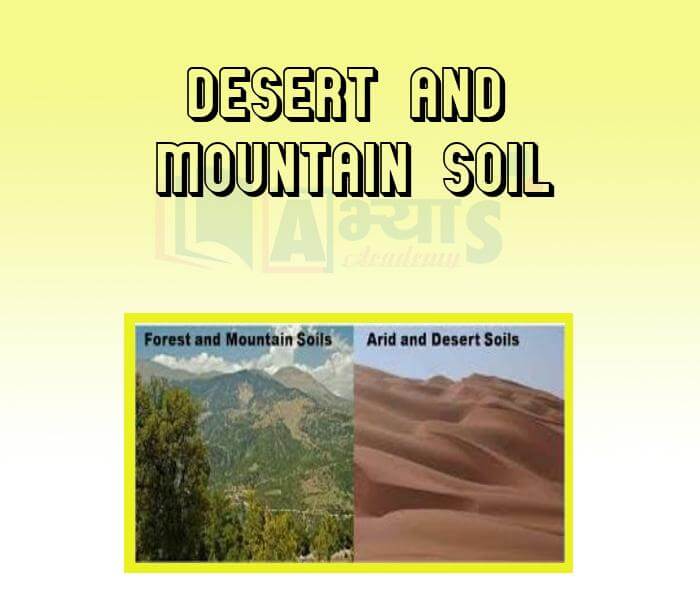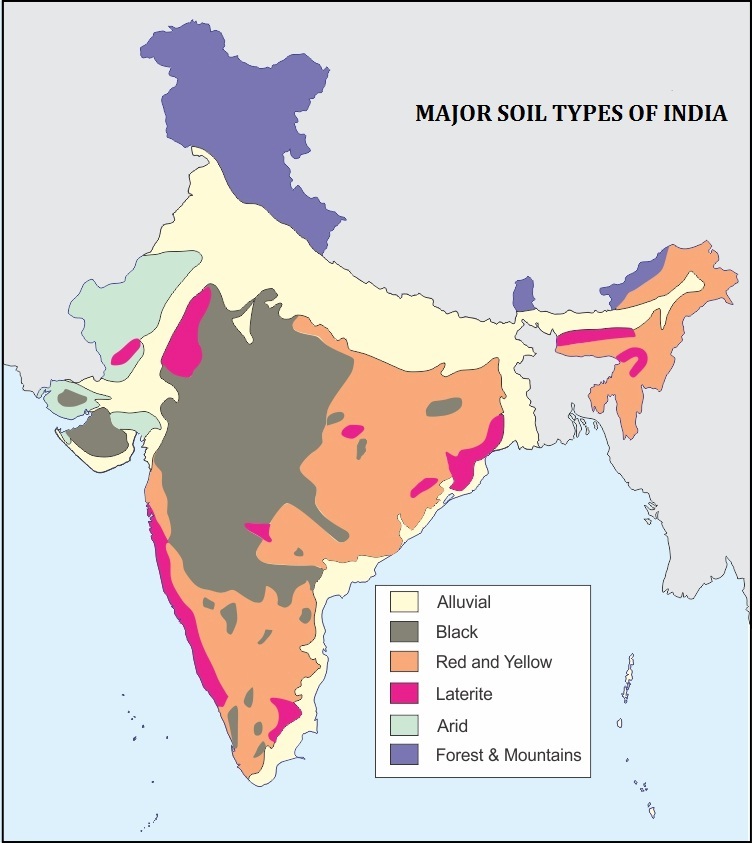Desert and Mountain Soil










Desert and Mountain Soil
Desert or Arid Soils: This soil covers about 4 per cent of India’s total geographical area. It is sandy in texture, red to brown in colour and saline in nature. In some areas common salt obtained in this soil due to evaporation of water. Some features of arid soil are given below :
Forest and Mountain Soils: It covers about 8 per cent of India’s total geographical area found in hilly and mountainous areas of the country sufficient forests are available. Some features of forest or mountain soils are given below
Map of India Showing Desert and Mountain Soil is given below. Desert soil is shown in Light Green colour and Mountain soil is shown Purple in colour :

Which of the following are the features of desert soil : (a) It lacks humus and moisture due to dry climate, high temperature and faster rate of evaporation. (b) It can be useful for cultivation only with suitable irrigation methods as in case of Ganganagar district of Western Rajasthan. (c) It is useful for growing barley, wheat, cotton, maize, millets and pulses. | |||
| Right Option : D | |||
| View Explanation | |||
Which of the following soils is very hard to cultivate? | |||
| Right Option : D | |||
| View Explanation | |||
Which of the statements given above is/are correct? A. The colour of the sandy soil varies from dark shades of reddish brown B. Forest soil is rich in humus as the organic matter is that decomposes to provide the same | |||
| Right Option : C | |||
| View Explanation | |||
Students / Parents Reviews [10]
My experience with Abhyas is very good. I have learnt many things here like vedic maths and reasoning also. Teachers here first take our doubts and then there are assignments to verify our weak points.

Shivam Rana
7thMy experience was very good with Abhyas academy. I am studying here from 6th class and I am satisfied by its results in my life. I improved a lot here ahead of school syllabus.

Ayan Ghosh
8thI have spent a wonderful time in Abhyas academy. It has made my reasoning more apt, English more stronger and Maths an interesting subject for me. It has given me a habbit of self studying

Yatharthi Sharma
10thMy experience with Abhyas academy is very good. I did not think that my every subject coming here will be so strong. The main thing is that the online tests had made me learn here more things.

Hiya Gupta
8thA marvelous experience with Abhyas. I am glad to share that my ward has achieved more than enough at the Ambala ABHYAS centre. Years have passed on and more and more he has gained. May the centre flourish and develop day by day by the grace of God.

Archit Segal
7thAbhyas Methodology is very good. It is based on according to student and each child manages accordingly to its properly. Methodology has improved the abilities of students to shine them in future.

Manish Kumar
10thIt has a great methodology. Students here can get analysis to their test quickly.We can learn easily through PPTs and the testing methods are good. We know that where we have to practice

Barkha Arora
10thAbout Abhyas metholodology the teachers are very nice and hardworking toward students.The Centre Head Mrs Anu Sethi is also a brilliant teacher.Abhyas has taught me how to overcome problems and has always taken my doubts and suppoeted me.

Shreya Shrivastava
8thIt was a good experience with Abhyas Academy. I even faced problems in starting but slowly and steadily overcomed. Especially reasoning classes helped me a lot.

Cheshta
10thOne of the best institutes to develope a child interest in studies.Provides SST and English knowledge also unlike other institutes. Teachers are co operative and friendly online tests andPPT develope practical knowledge also.
